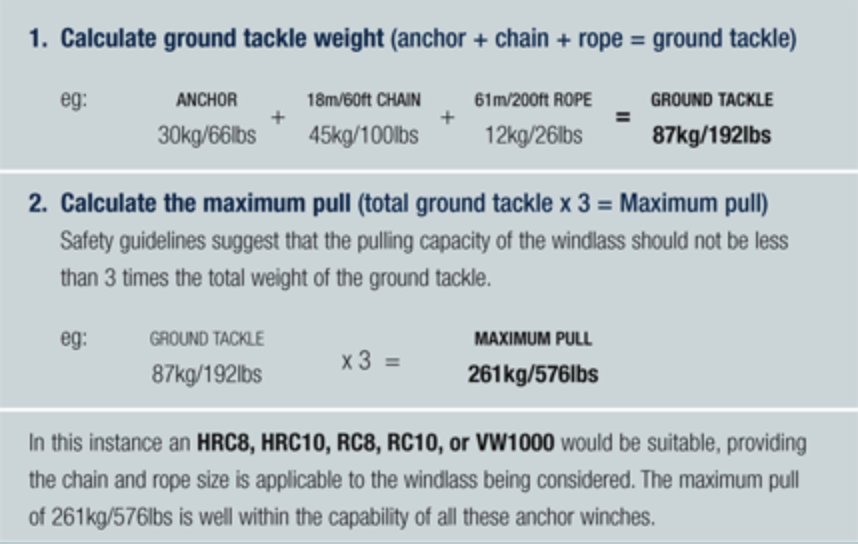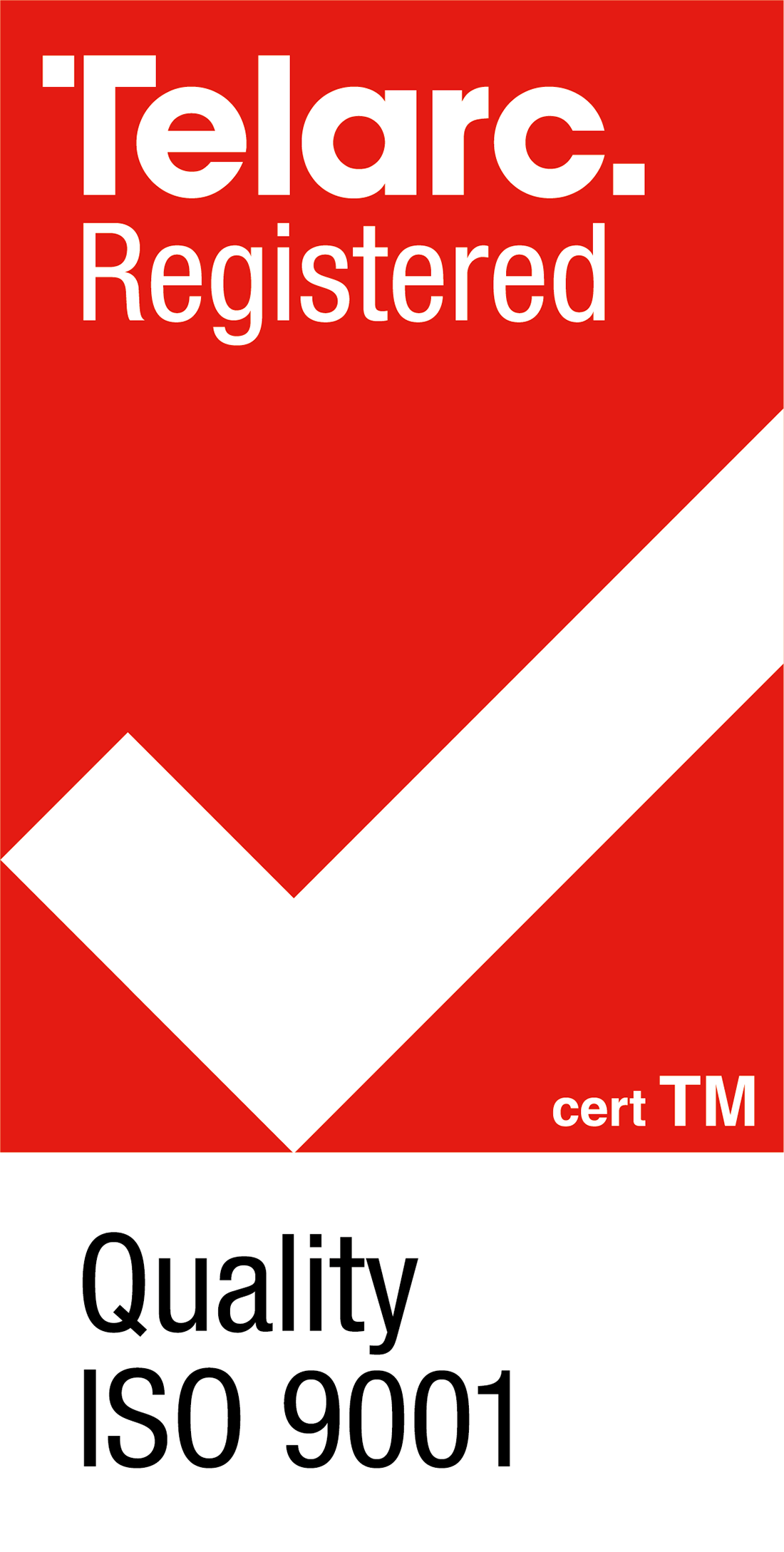FREQUENTLY ASKED QUESTIONS
Maxwell Marine have sold all their Sheet Winch spare parts and tooling to the Australian Yacht Winch Company known as ARCO. ARCO are world renowned as a source for spares for old Sheet Winches. Their contact details are www.arco-winches.com or telephone: +61 2 9623 2448 or fax: +61 2 9623 2265. Arco are based in New South Wales, Australia.
The latest Maxwell Power & Sailing Boats and Superyacht catalogues have a section advising you how best to ascertain which windlass is best suited to your boat and your requirements. If your boat is in the 6 meter (20 feet) to 20 meter (65 feet) range, then the Power & Sailing Boats catalogue should provide you with most of the background information you need. If you are fortunate enough to be considering the most suitable windlass for your Superyacht (vessels generally over 25 meters (80 feet), then the “15 Easy Steps to Windlass Selection” chart in Maxwell’s Superyacht colour catalogue should provide you with the information you need. Should you require further assistance with your windlass selection please do not hesitate to contact Maxwell or any of their representatives world wide. Contact details can be found under the ‘Find Us’ section of our web site.
There are many nautical terms associated with the anchoring of your boat. Winch and windlass are but two. To acquaint you with many of the commonly used terms associated with lowering and raising your anchor, we have provided a Glossary of Terms in both our Power & Sailing Boats and Superyacht catalogues. These terms can also be found under the Support section of our Website. Click ‘Glossary’. For those of you who really want to get into marine nomenclature there is an excellent book available called: “The Oxford Companion to Ships and the Sea”, Oxford University Press.
Maxwell manufactures both. Refer to the “Which Winch” section of our Website under Power & Sailing Boats or check Superyacht headings for more information regarding which type will be most suitable for your boat.
Much will depend on your anchoring requirements. Maxwell manufactures a number of different winches suitable for all chain use or for rope and chain use. The Maxwell Power & Sailing Boats catalogue details all available models and sizes. You can also check our Website for information under Power & Sailing Boats. Just click under any of the models shown.
We have included an Anchoring Tips section in our General Products catalogue. You can also find this information under the Support section of our web site. Click on Winch Safety and scroll down.
When anchoring your boat there are many factors to take into consideration. Depth of water, type of seabed, wind, tide and proximity of other vessels are all considerations. Books on seamanship will vary in their opinion. However, considering relatively sheltered anchoring conditions, you should lay out at least three times more chain than the depth of water you are anchoring in (don’t forget to allow for the rise and fall of the tide). If using a combination rope/chain rode then you will want to consider at least a five to one ratio of rode to water depth. Always remember, use common sense and if in doubt, lay out more rode.
Maxwell products are sold and distributed around the world. Maxwell has appointed distributors, service agents and/or retailers in most countries. Click on Find Us on our Website for the help nearest you. Our Head Office in New Zealand, or our two branch offices in the USA and Australia, are always ready to help if no one else can answer your questions. If you wish to contact us via e-mail either Make An Enquiry from the Find Us section of this site or e-mail us at: info@maxwellmarine.com.
WINCH SELECTION GUIDE
There are a number of important criteria to be considered in selecting the correct anchor winch. These include the vessel size, displacement, windage, anchor size and rode selection. Practicalities such as locker space and depth of fall for the rode also play a part in deciding which windlass is ideal for you.
Maxwell Marine’s range of windlasses and capstans is extensive, with models to suit boats up to 100 metres (over 300 feet). This section aims to simplify the selection process by taking you step by step through all the criteria that needs to be considered when choosing a windlass or capstan.
Maxwell Marine’s range of windlasses and capstans is extensive, with models to suit boats up to 100 metres (over 300 feet). This section aims to simplify the selection process by taking you step by step through all the criteria that needs to be considered when choosing a windlass or capstan.
Consider the overall length and displacement (either light or heavy) of your boat and use the chart provided to identify the most suitable windlass or capstan for your vessel.
The two basic types of windlasses are differentiated by the drive shaft orientation. Deck thickness and underdeck space are the two main considerations when deciding which of the two types to fit.
Vertical windlasses make up the majority of anchor winch sales. They are characterised by situating the capstan and/or gypsy (topworks) above the deck and the motor and gearbox below. Vertical windlasses provide a 180° wrap of the anchor rode around the chainwheel giving optimal chain control, minimising slippage and jumping.
Horizontal windlasses are mounted completely above deck with gypsy and capstan located to either side. They provide a 90° wrap of the anchor rode around the chainwheel.
Deck thickness and locker space play an important role in deciding whether to install a vertical or horizontal windlass. Estimating or measuring the depth of fall of the rode into the anchor locker may dictate which type of windlass is most suitable for your vessel. Calculating the depth of fall differs for horizontal chain only windlasses and for vertical chain or rope/chain windlasses (see diagram below).

Rope and, particularly chain, selection is extremely important. Deciding on the right anchor winch for your boat depends on the size, not only of the boat, but also the ground tackle. Maxwell anchor winches and capstans are designed to take chain only, rope only or a combination of both. Automatic rope/chain systems are now commonly used on boats up to 20 metres (65 feet). Consequently, Maxwell’s HRC6, HRC8, HRC10, RC6, RC8, RC10 and the NEW RC12 automatic rope/chain systems have become increasingly popular, as they offer the added benefit of less weight in the bow with the ability to carry an increased amount of rode. Chain only systems remain popular on heavier displacement sail and motor yachts. There are two main types of anchor chain. Short link chain is most commonly used on small and medium sized boats while stud link chain is generally used on much larger vessels such as Superyachts. The latter is characterised by a stud (bar) joining the two sides of the link preventing them from deforming when overloaded. High test or calibrated short link chain should always be used. Long or regular link chain should not be used with anchor windlasses.
There are a wide variety of both metric (mm) and imperial (inches) chain sizes available and these will have bearing on your final windlass decision. It is important that the right size and right grade of chain is used to ensure a correct fit of the links to the gypsy. If the chain is not matched to the chainwheel problems may occur, such as the chain jumping off the gypsy or the chain jamming as it will not feed smoothly through the chain pipe. As chain to chainwheel compatibility is so important, Maxwell Marine supplies chainwheels to fit just about every known chain available on today’s international market.
The wattage of a DC electric motor is not the important factor. Rather it is the efficiency of the whole winch, including the gearbox and motor, which counts. With the increasing popularity of powerful and compact on-board generators, AC powered winches are becoming a practical consideration for bigger boats. Hydraulic systems provide another power source well worth considering as they have the advantage of constant speed under all load conditions and can be run almost constantly while coupled with safe guards such as pressure relief valves. Modern hydraulic systems offer an integrated, low maintenance and efficient, centrally managed, power pack.
The only meaningful way to rate anchor winch performance is by looking at what it will lift and at what speed. The two things to consider are (a) the maximum pull capability and (b) the working load of the winch. Maximum pull (sometimes referred to as stall load) is the maximum short term or instantaneous pull of the winch. Working load is generally rated at about one third of the maximum pull and is usually considered to be the load that the winch is pulling once the anchor is off the bottom. To determine your required maximum pull capability, complete the calculation below.

Circuit breaker/isolators are used in the installation of any DC electric windlass to provide protection to motor and cables should the windlass be overloaded. Accessories such as chain stoppers or chain snubbers must be used for safe anchoring, the avoidance of unintentional self-launching of the anchor and for the prevention of damage to your anchor winch.
You should never anchor off your winch or use your winch to pull your boat to the anchor spot. The anchor winch is designed to lift a dead weight and should not be subjected to the strain of your boat riding at anchor.
If you think the winch you are considering may be too small, then go to the next size up. Better to have excess lifting capacity than not enough! Maxwell Marine and their agents or distributors offer free and helpful advice should you have any questions. Alternatively, check out Maxwell’s website


